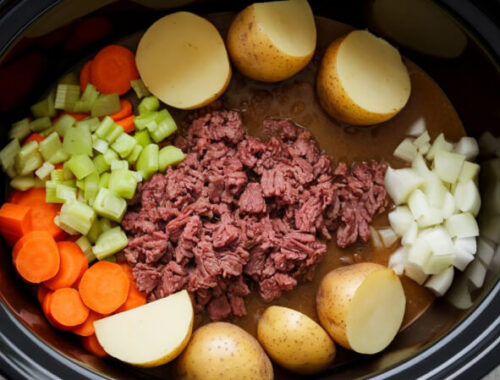10 Signs Your Blood Sugar is Out-of-Control (and what to do about it now)

If you’re here, you’re probably curious about blood sugar levels and how that relates to diabetes. That’s a smart move because early detection can make a world of difference in managing this condition.
So, let’s have a little chat about the causes of diabetes, the key symptoms to watch for, and what to eat (and avoid) to help keep your blood sugar under control.
And be sure to read to the end where we talk about a little-known secret cause of diabetes that can shut down your pancreas.
{Affiliate links included below}
Causes of High Blood Sugar: What’s Going On?
First things first, let’s talk about what causes high blood sugar and diabetes. Understanding the root of the problem can help us be more aware of your own personal risk factors.
- Genetics: Yep, you can thank your family tree for this one. If diabetes runs in your family, you might be more likely to develop it.
- Lifestyle: Sedentary lifestyle, poor diet, and lack of exercise— all of these can contribute to diabetes, especially the type 2 kind.
- Weight: Being overweight or obese is a big-time risk factor for type 2 diabetes. Excess fat, particularly around the abdomen, can affect how your body uses insulin.
- Age: The risk of type 2 diabetes increases as you get older, especially after age 45.
- High Blood Pressure: Having high blood pressure is another risk factor that can lead to diabetes.
- Polycystic Ovary Syndrome (PCOS): Women with PCOS are at a higher risk of developing diabetes due to insulin resistance.
- Gestational Diabetes: If you had diabetes during pregnancy, you and your child have a higher risk of developing type 2 diabetes later in life.

10 Symptoms of Diabetes: What to Look Out For
Now that we know what can cause diabetes, let’s go over some of the symptoms.
Recognizing these early warning signs can help you be aware of what’s happening so you’ll take action sooner rather than later.
- Frequent Urination: Are you hitting the bathroom more often than usual? This could be a sign your kidneys are working overtime to get rid of excess sugar in your system.
- Increased Thirst: Feeling parched all the time even when you drink water? Excessive urination can lead to dehydration, making you drink more.
- Extreme Hunger: If you’re always hungry, even after eating, it might be because your body isn’t using insulin properly.
- Unexplained Weight Loss: Losing weight without trying? This can happen because your body starts burning muscle and fat for energy when it can’t use glucose.
- Fatigue: Feeling unusually tired? High blood sugar levels can make you feel exhausted and unmotivated.
- Blurry Vision: High blood sugar can affect your eyes, causing blurred vision.
- Slow-Healing Sores: Have cuts or bruises that take forever to heal? High sugar levels can mess up your blood flow and slow down the healing process.
- Frequent Infections: High glucose levels can weaken your immune system, leading to more infections.
- Tingling or Numbness: Experiencing tingling or numbness in your hands or feet? This could be a sign of nerve damage due to chronically high blood sugar.
- Dark Skin Patches: Notice dark patches of skin, especially around the neck and armpits? This condition, called acanthosis nigricans, can be another sign of insulin resistance.
What to Eat and Not Eat to Help Control Diabetes

Managing blood sugar and diabetes—whether you’re trying to prevent it or control it—often comes down to what you put on your plate and pour down your throat.
In the words of Dr. Frank Shallenberger, M.D.:
If you want to eat well and healthfully, you will have to get used to bucking your culture. Many of your friends will think that you have turned into a health nut, or that you have been indoctrinated by some kind of food cult…. Just do what’s right, even if the rest of the neighborhood is sucking down convenience foods and carbohydrates like they are about to go out of style because they “taste so good.”
From The Type 2 Diabetes Breakthrough
So let’s talk about the good and the not-so-good choices that affect how steady your blood sugar is.
What to Eat:
- Whole Grains: Foods like brown rice, quinoa, and whole wheat bread are considered healthier because they have a lower glycemic index than refined grains like white rice and white bread. This means they release sugar slowly into your bloodstream. But even whole grains have to be consumed in moderation as too much can spike sugar levels.
- Leafy Greens: Spinach, kale, and other greens are packed with nutrients and low in carbs.
- Proteins: Chicken, turkey, fish, and plant-based proteins like beans and nuts can help keep you full without spiking your blood sugar.
- Healthy Fats: Avocados, seeds, coconut oil, and olive oil can be beneficial for heart health and blood sugar control.
- Fiber-Rich Foods: Foods high in fiber, like fruits, vegetables, and legumes, can help regulate blood sugar levels.
What Not to Eat:
- Sugary Drinks: Sodas, sweetened energy drinks, and fruit juices are loaded with empty calories and will cause blood sugar spikes. Stick to water (flavored water is great), herbal teas, or sugar-free beverages.
- Refined Carbs: White bread, pasta, and pastries can cause quick spikes in blood sugar levels. If you eat grains or bread, opt for whole grain versions instead.
- Processed Foods: Packaged snacks, fast food, and ready meals often contain high carbs, hidden sugars and unhealthy fats.
- Trans Fats: Found in many fried and baked goods, trans fats can increase your risk of heart disease and worsen insulin resistance.
- Vegetable Oils: While some vegetable oils are marketed as healthy, oils like corn, soybean, and sunflower are often rancid and are high in omega-6 fatty acids. These fatty acids can promote inflammation when consumed in excess. Instead, opt for oils with healthier fat profiles, such as coconut oil, virgin palm oil, olive oil or avocado oil. These are higher in healthy monounsaturated and saturated fats and have anti-inflammatory properties.
Hidden Causes of Diabetes
Did you know that scientists have found a “toxic blanket” surrounding the pancreas of some people with diabetes?
By waking up a dormant part of your immune system and unlocking its power, you can actually wipe out the harmful “zombie cells” that are shutting down your pancreas and causing high blood sugar levels.
Recent studies from Harvard University have discovered that there’s a specific plant that targets the root cause of Type 2 Diabetes.
These studies refer to these damaging “zombie cells” that build up around the pancreas and cause the disease.




